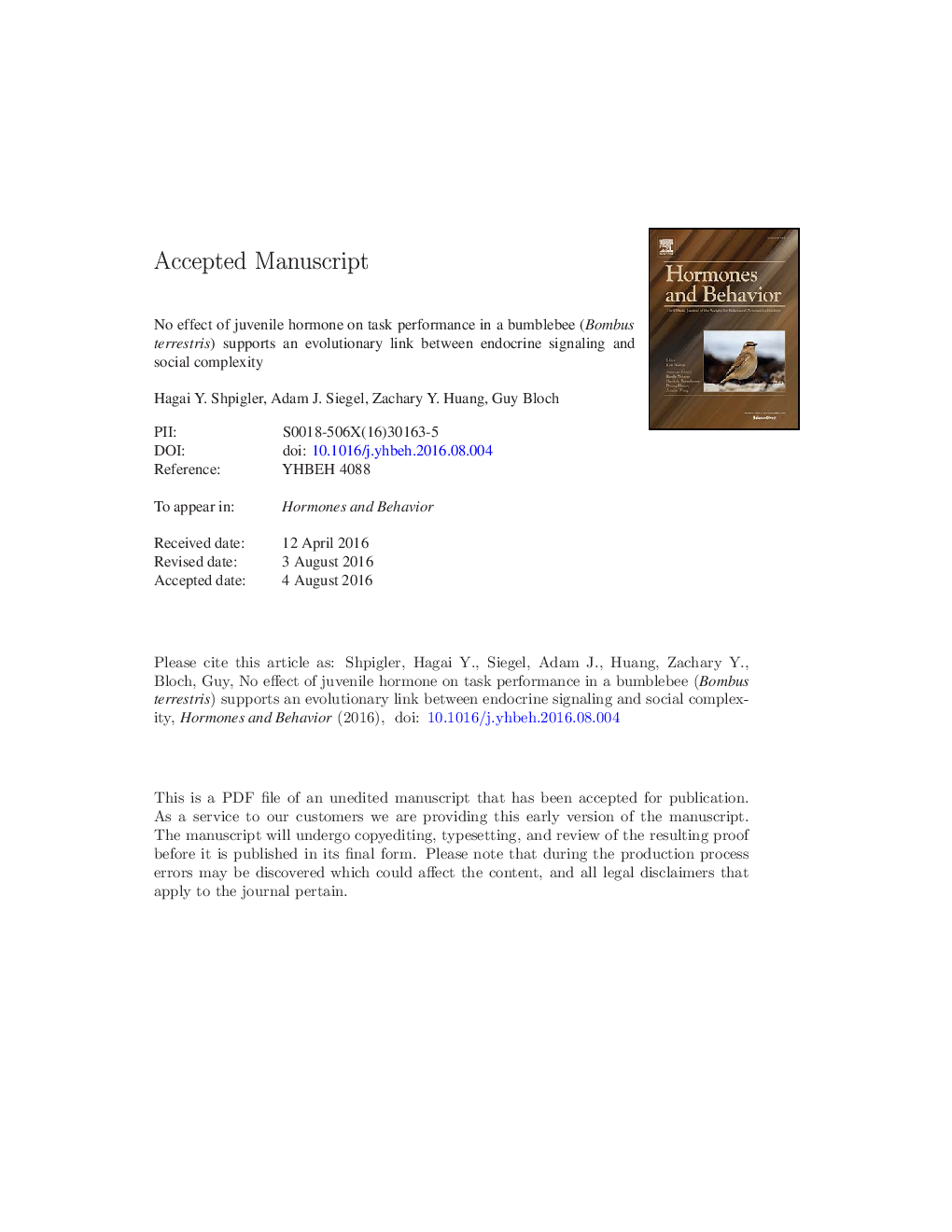| Article ID | Journal | Published Year | Pages | File Type |
|---|---|---|---|---|
| 6794298 | Hormones and Behavior | 2016 | 33 Pages |
Abstract
A hallmark of insect societies is a division of labor among workers specializing in different tasks. In bumblebees the division of labor is related to body size; relatively small workers are more likely to stay inside the nest and tend (“nurse”) brood, whereas their larger sisters are more likely to forage. Despite their ecological and economic importance, very little is known about the endocrine regulation of division of labor in bumblebees. We studied the influence of juvenile hormone (JH) on task performance in the bumblebee Bombus terrestris. We first used a radioimmunoassay to measure circulating JH titers in workers specializing in nursing and foraging activities. Next, we developed new protocols for manipulating JH titers by combining a size-adjusted topical treatment with the allatotoxin Precocene-I and replacement therapy with JH-III. Finally, we used this protocol to test the influence of JH on task performance. JH levels were either similar for nurses and foragers (three colonies), or higher in nurses (two colonies). Nurses had better developed ovaries and JH levels were typically positively correlated with ovarian state. Manipulation of JH titers influenced ovarian development and wax secretion, consistent with earlier allatectomy studies. These manipulations however, did not affect nursing or foraging activity, or the likelihood to specialize in nursing or foraging activity. These findings contrast with honeybees in which JH influences age-related division of labor but not adult female fertility. Thus, the evolution of complex societies in bees was associated with modifications in the way JH influences social behavior.
Related Topics
Life Sciences
Biochemistry, Genetics and Molecular Biology
Endocrinology
Authors
Hagai Y. Shpigler, Adam J. Siegel, Zachary Y. Huang, Guy Bloch,
